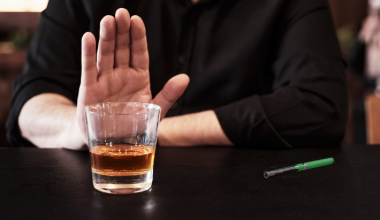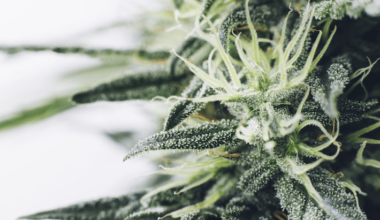Long constrained by strict regulations and advertising restrictions, the cannabis industry is finding a powerful ally in artificial intelligence (AI).
From marketing agencies to dispensaries and software providers, AI is transforming how cannabis businesses operate, market and connect with their audience.
Platforms like Facebook, Instagram and Google impose restrictions on cannabis advertising, often shadow-banning content or flagging accounts.
Marketing in a regulated landscape
But AI can be used to brainstorm creative strategies, develop compliant content and optimize campaigns, said Josefine Nowitz, co-founder of Newton, Massachusetts-based marketing agency Cannabis Creative Group.
“AI helps us steer content to be more friendly for a 21-plus audience while avoiding common pitfalls like content geared toward minors or showing consumption,” she said. “It’s a human-led tool that supports our strategies, but creativity and compliance still require a human touch.”
AI also plays a role in research and audience segmentation. Tools like Alpine IQ and SpringBig, which incorporate AI features, help marketers identify audience behaviors, geotargeted regions and competitive differentiators.
This allows agencies to create hyper-targeted campaigns that comply with state-specific regulations while standing out in a crowded market.
AI at retailers
Cannabis retailers are also embracing AI to enhance customer experiences and streamline operations.
Sweed, a Burbank, California-based software provider for marijuana stores, integrates AI into its point-of-sale (POS) systems to recommend products based on customer preference and purchase history.
For example, if a customer buys a specific strain, the AI can suggest similar products, increasing upsell opportunities and customer satisfaction.
Sweed offers more than 100 segmentation keys customers can use to determine characteristics like age or average spend.
“Cannabis had this habit of designing one message and sending it out to all of their customers,” said Rocco Del Priore, co-founder of Sweed. Our effort is to send fewer messages but target them.”
For example, a retailer may send generic messages to 20 people and hope to see five of them result in a purchase. But with AI, you may target 10 people with a specific message and get seven of them to respond favorably, Del Priore said.
An email offering customers 20% off all flower may not get much response, he said.
“But what if you get one that says you purchased a lot of this and there’s this new product? That is going to build a little more trust because someone took some time to give you something that’s relevant,” he said.
“AI segmentation keys allow dispensaries to identify at-risk customers or high-value shoppers and design campaigns to re-engage them. It’s a level of sophistication that smaller operators can now access without the need for extensive manpower.”
Sweed’s tools also help retailers create personalized marketing campaigns, offering specific tools for both large and small organizations.
By analyzing customer data, dispensaries can send tailored offers, such as discounts for abandoned carts or recommendations for new products based on past purchases – a targeted approach that builds trust and loyalty among customers.
The Daily Green, a single-store cannabis retailer in New York City, uses AI to brainstorm ideas and written content for campaigns, website blogs and marketing communications.
It can generate lists of potential ideas or short-form content the company’s marketing professionals can refine, edit and produce into marketing assets, said Chris Thompson, the store’s director of operations and marketing.
“What would have taken a larger team a few days to create can now be done by a small team in a few minutes with AI assistance,” Thompson said.
But The Daily Green doesn’t use AI for everything. It steers clear of AI-generated images or videos, preferring to employ graphic artists and videographers to create custom content.
“Artist-created visual content feels much more aligned with our brand vision and is better suited to follow strict cannabis compliance guidelines,” Thompson said.
Revolutionizing cannabis science and personalization
On the cutting edge of AI in cannabis is Bud-E, a platform that combines human genetics with plant genetics to recommend cannabis strains tailored to individual needs.
Bud-E founder Colin Fraser said the AI-powered system analyzes genetic markers to determine how THC and other cannabinoids interact with a person’s endocannabinoid system.
“Imagine being able to say, ‘I have back pain – what’s the best product for me?’ Our system uses AI to match your genetics with the right cannabis strain and even tells you where to buy it,” Fraser said.
This level of personalization not only enhances the customer experience but also positions cannabis as a legitimate tool for wellness and medicine.
By capturing data on how products affect users, Bud-E is paving the way for more informed clinical trials and regulatory trust.
The future of AI in cannabis
While AI is already making waves in the cannabis industry, its potential is just beginning to unfold.
As laws evolve and technology advances, AI will likely play an even greater role in compliance, marketing and customer engagement.
Subscribe to the MJBiz Factbook
Exclusive industry data and analysis to help you make informed business decisions and avoid costly missteps. All the facts, none of the hype.
What you will get:
- Monthly and quarterly updates, with new data & insights
- Financial forecasts + capital investment trends
- State-by-state guide to regulations, taxes & market opportunities
- Annual survey of cannabis businesses
- Consumer insights
- And more!
However, industry leaders agree that AI is a tool – not a replacement for human creativity and expertise.
“AI is like the internet or email when it first started – it’s a game-changer,” Nowitz said. “But at the end of the day, it’s the people behind the prompts and strategies that make the difference.”
Margaret Jackson can be reached at margaret.jackson@mjbizdaily.com.
Medical Disclaimer:
The information provided in these blog posts is intended for general informational and educational purposes only. It is not a substitute for professional medical advice, diagnosis, or treatment. Always seek the advice of your physician or other qualified healthcare provider with any questions you may have regarding a medical condition. The use of any information provided in these blog posts is solely at your own risk. The authors and the website do not recommend or endorse any specific products, treatments, or procedures mentioned. Reliance on any information in these blog posts is solely at your own discretion.






